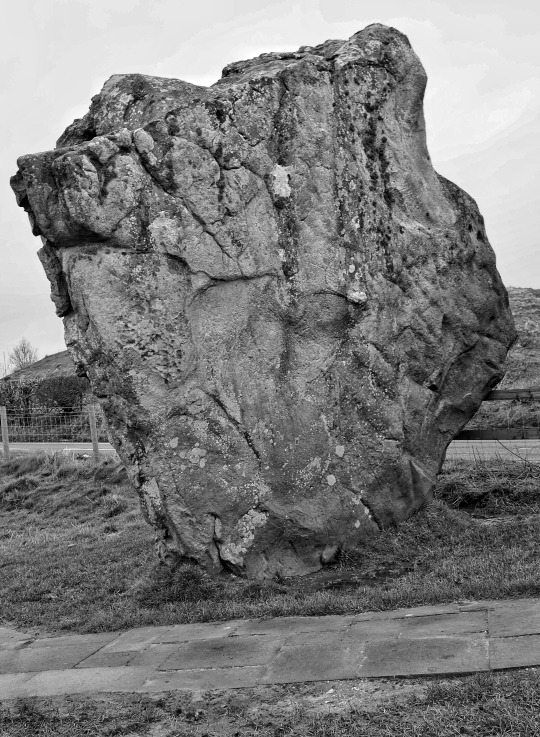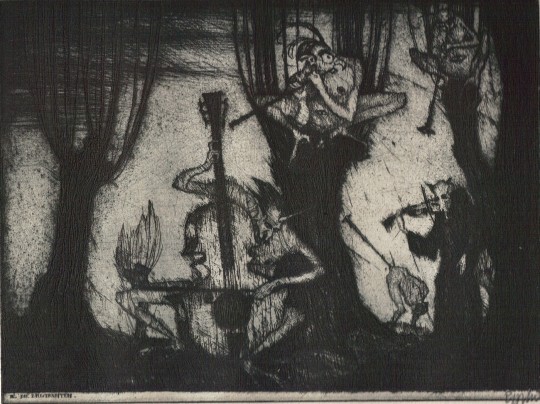Text
Pompeii of the Sea
In 1998 Italian archaeologists succeeded by chance in finding something that nobody had expected until then. It was planned to build a new business centre for the railway in Pisa not far from the Tower. But they found not only natural ground but also more than 30 ships, both sea-going and river vessels and port facilities, and called it the Pompeii of the sea.
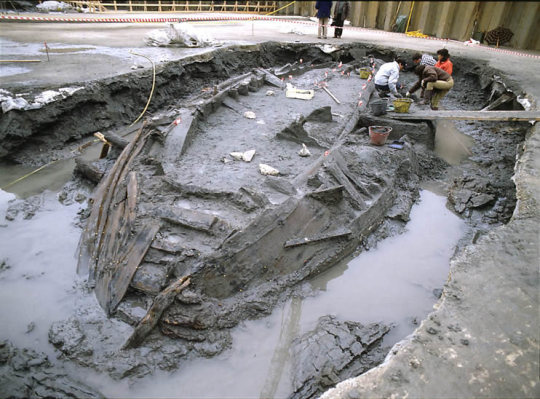
Ship D capsized before sinking; the dirt-filled area in the center represents a gash in its bottom, possibly a merchantship date 4-5 century AD

Ship F at the exhibition- a river vessel, date 1st. - 2nd. century AD
The following excavations unearthed a wealth of objects, including ceramics, amphorae and a number of items related to daily life and traffic within a port. Ropes and rigging, fishing equipment, navigational instruments, anchors made of stone, wood and iron, baskets and pots. Items which had something to do with either the cargo or the equipment of ships calling at the port of Pisa and which for some reason landed on the bottom of the port. Even wooden and leather sandals, bags and aprons were found. But also the reason for the sinking of ships and port facilities was found. Several large floods were responsible for this, until the harbour had to be abandoned completely.

Ship equipment from the excavations in Pisa
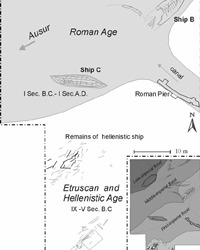
A section of the excavation with the several floods
The archaeologists also found the bones of several sailors and animals. Remarkable is the discovery of the skeleton of a sailor and his dog.

Skeletons of a sailor and his dog
The remains of port facilities have also been brought to light, representing at least 39 wrecks from different periods. The longest wreck measures thirty metres. The ships date from the 2nd century BC to the 5th century AD.
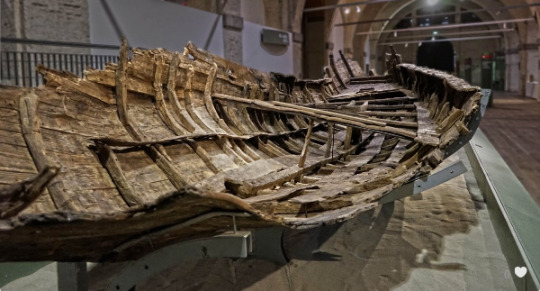
The so called Alkedo ship ( Ship E ), a pleasure ship, sunk by the first half of the 1st century AD
This discovery not only gives a particularly good insight into Roman shipbuilding and trade. It also gives a good insight into a port that is now miles away from the sea, but which once lay on a lagoon.
1K notes
·
View notes
Text
‘Bodowyr’ Prehistoric Burial Chamber, Pen and Ink Sketch, Anglesey, North Wales, January 2019.

30 notes
·
View notes
Text

5000 yr old Neolithic Dowel Cave Burials, Stockport Museum, Stockport, 8.3.20.
305 notes
·
View notes
Text
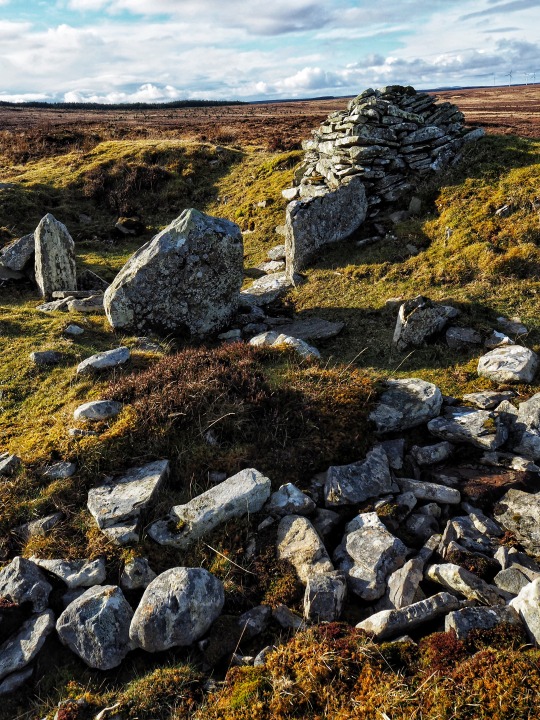


South Yarrows North Long Chambered Cairn, Yarrows Archaeology Trail, Wick, Caithness, Scotland, 25.2.20.
55 notes
·
View notes
Text
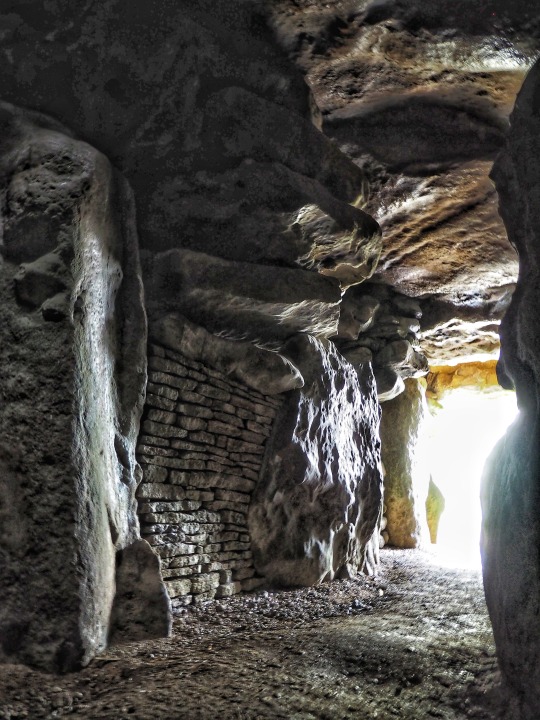

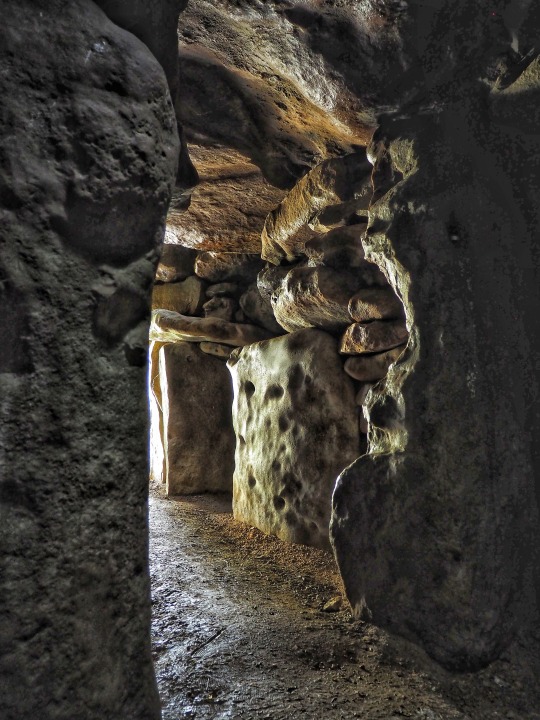

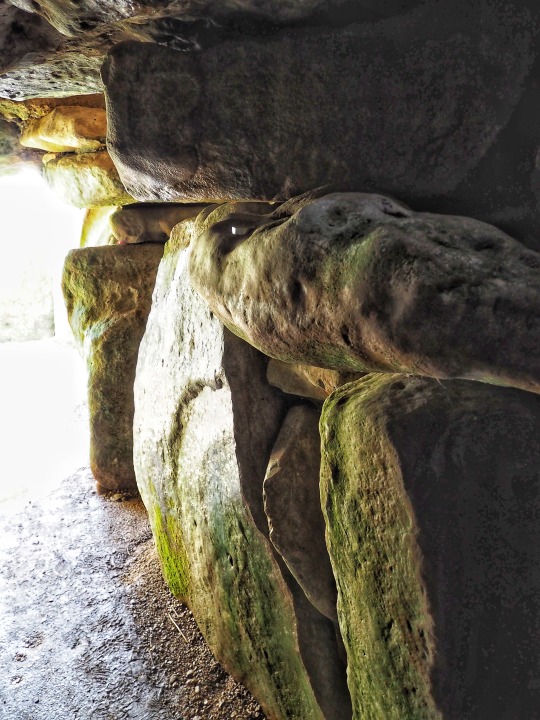
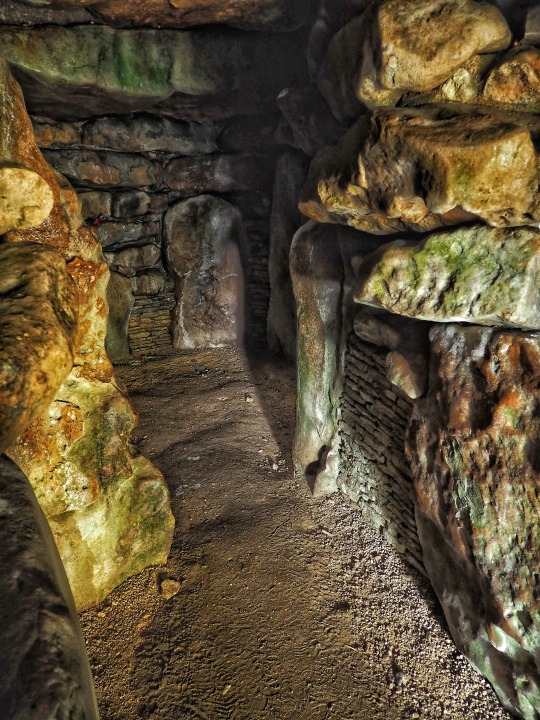

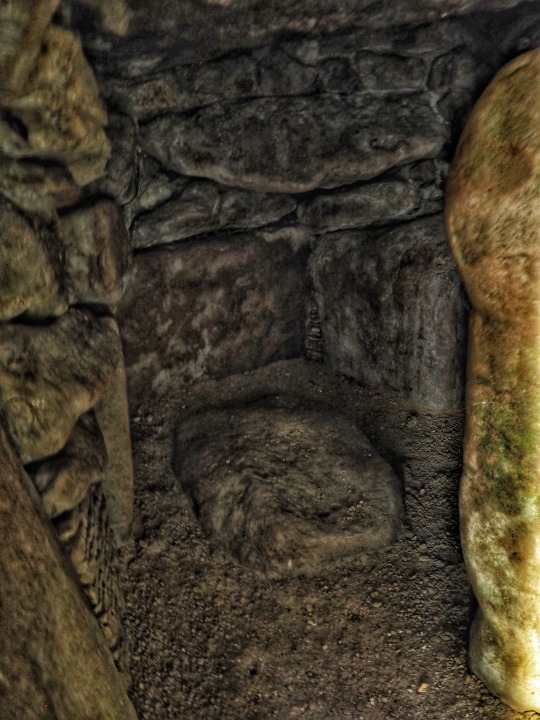

West Kennet Prehistoric Long Barrow Interior, West Kennet, Wiltshire, 7.3.20.
234 notes
·
View notes
Photo
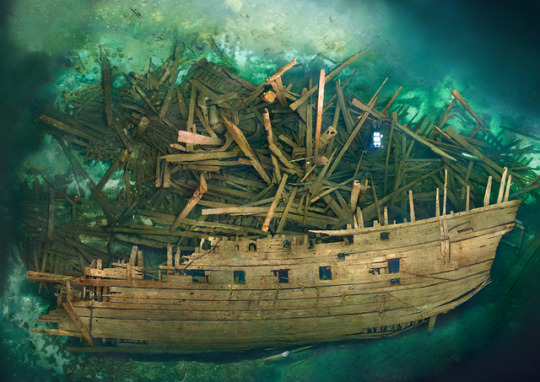
Wreck of the swedish Mars 1564
May I introduce ? this is the flagship of the Swedish Navy under King Erik XIV, the Mars Makalös (the flawless, sometimes also called the Jutehattars, Danish hater) from 1563.
It was part of a major armament campaign initiated by Erik to gain the final upper hand in the Baltic Sea and to force the countries, northern Germany, Denmark and the rest of Western Europe in their places.
Ship type, rigging and crew
She was built between 1561 and 1563 in Birkenes. Her master builder was Holger Ohlsson, a master shipbuilder from Stockholm. What kind of ship she exactly is not yet aware of, it seems to be suspected to be a mixture of Carrack and Caravel. Possibly it is an early galleon, a ship-of-the-line. She was 50 m long, about 13-15 wide and weighed about 1,800 tons. A ship of Mars size during this time may well have had four masts. On a copper plate showing the Mar´s downfall the ship has four masts. Possibly the Mars was one of the first vessels in Sweden who were fitted with a third sail, the “upper topsail” .
This is different from the few years older Elephant which only had two sails on the same mast. Mars may have had five or seven crow´s nest. The crew of Mars amounted to about 670 persons, of whom about 350 were boatmen and the other for the most part soldiers. Most of the sailors and soldiers were enlisted. On board the ship was also the admiral, the old trustworthy Jacob Bagge.

A drawing of the Mars by Jacob Hägg, 1909
Armament
Armament could vary significantly from year to year, depending on availability and needs. Cannons were called simply called “shooter” and the different types went under a series of names, such kartoger , slangor (snakes) and falconets. Of these there were also classes, three forth kartoger, half kartoger and so on.
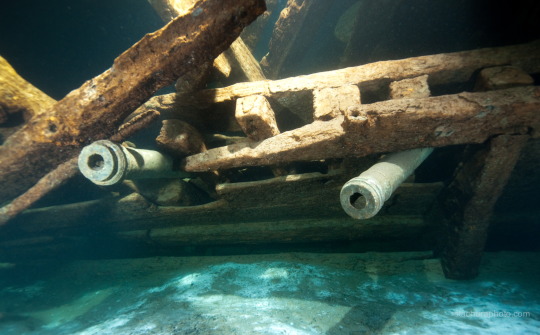
On Mars’ starboard side, the hull lists towards the seabed. Cannons still point out through their portholes.
Mars was almost exclusively armed with muzzle-loading bronze cannons, but they also had rapid-fire, but less powerful breechloader iron guns on board. There are various data on the number of guns in Mars, one source tells 173 and another 107 pieces, including:
2 pieces of 48-pounder
2 pieces of 36-pounder
9 pieces of 24-pounder
10 pieces of 12-pounder
4 pieces of 9-pounder
20 pieces of 6-pounder
6 pieces of 3-pounder
4 pieces of stone boxes
50 Falkoner / falconets (light cannon)
The guns where cast in Stockholm, but also in Kalmar. Cannon carriages are manufactured at Norrmalm, Stockholm and Kalmar.
On the English ship Mary Rose 1545, the big bronze cannons had “four roll boxes”, ie, carriages with four wheels. Iron / chamber guns were in carriages with two wheels. On board the Mars, there were 53 “boxes” (carriages) of unknown type.
The building accounts of the ship Elephant from the same period mentioned installation of the “byssebänkar” (shooting benches) which may have meant guns without wheeled carriages.

Cannon still sits in its carriage. To the right are rolls of lead, stacked. The lead was used for hull repairs but also for casting ammunition for muskets and small caliber cannons.
Ammunition
There were a variety of ammunition types on board in addition to round balls. Chain shots where used to destroy the rig. The latter could also be used against the crew which also could face heavy hail from so-called scrap shots or canister shots. They also used the “fireworks”, incendiary grenades, and fire-balls (container filled with flammable material).

Cannon ball made of stone most likely used in back-loaded iron cannons
Small arms
To fight the enemy before boarding, in addition to shooting scrap shots they made use of crossbows, bows, hook guns and muskets. For close combat axes and short spikes where the weapon of choice. There were different types of gunpowder, a faster burning “krönekrut” for muskets and a slower burning gunpowder for the cannons.
Nordic Seven Years’ War
Not much is known about Mars over the period immediately after its completion, and it has only had a short period of service. Its most important historical event was a battle in the Baltic Sea during the Three-Crown War, also known as the Nordic Seven Years’ War. During this conflict, the Kingdom of Denmark stood on one side, forming an alliance with the Hanseatic city of Lübeck and the Kingdom of Poland, and the Kingdom of Sweden on the other.

Sieg der Lübecker über die Schweden in der Seeschlacht bei Gotland am 31. Mai 1564/ Victory of the Lübeckers over the Swedes in the naval battle near Gotland on 31 May 1564 by Hans Bordt 1901 a wall painting on the wall of the red room , Lübecker city hall
On 30 May 1564, a two-day battle between the two conflicting parties took place in the Baltic Sea between the islands of Öland and Gotland. 16 Danish large ships led by Admiral Herluf Trolle and 10 Lübeck large ships led by Admiral Friedrich Knebel faced 16 Swedish large ships commanded by Admiral Jakob Bagge. On the first day the Swedish ships could inflict damage on their opponents after short but fierce battles. With nightfall the battle was interrupted and only continued the next day. When the wind changed on the second day, the Swedish ships had to retreat one after the other because of the unfavourable winds for them - only Mars continued fighting alone and was surrounded by the Allied supremacy. Mars nevertheless succeeded in sinking a Lübeck ship and damaging several Danish ships. The Lübeck Chronicle reports that the numerically superior allies succeeded in disabling Mars’ rudder by gunfire. However, it was found undamaged on the seabed.

Battle of Öland 30 May 1564 by unknown artist
In the course of the following exchange of blows, the crew of Lübeck’s flagship Der Engel/ The Angel, led by Admiral Friedrich Knebel, applied Mars together with the ships Byens Løffue (Denmark) and the Lübeck Fuchs / Fox. In a very hard battle the crews succeeded in approaching Mars in such a way that it could be boarded. During the boarding the Swedish ship caught fire, which spread quickly. The Lübecker managed to capture the commander-in-chief of the Swedish fleet, Admiral Jakob Bagge, and his second-in-command Arvid Trolle. Finally, Mars exploded a short time later, when the Lübecker plundered the ship’s magazine. 880 Swedes, Danes and Lübeckers were on the ship at that time. A large part of it drowned or became victim of the flames and/or the explosion pressure wave or flying explosion debris. Friedrich Knebel later reported to his superiors that “500 were killed, 100 were captured”. Jacob Bagge was imprisoned in Copenhagen and was released several years after the war. Mars finally sank to a depth of 75 m on 31 May 1564.
Finding the wreck
On 19 August 2011 it became known that the wreck of Mars was found by a team of divers at a depth of 75 metres, about 18.5 kilometres north of Öland. The archaeologists hope to find well-preserved artefacts and many new findings about the ship. The cold, low-oxygen water of the Baltic Sea offers ideal conditions for the conservation of the 400-year-old ship - especially as the wood-decomposing shipworm does not occur here either.
The Mars is very intact, in fact all of the wood is still there. Cut marks from carpenters axes can still be seen and traces of white paint. The explosion and the test of time have caused her to partly collapse. The port hull side remains almost completely intact with rows of cannon ports. The wreckage sticks up some 11m from the bottom at its highest point. In the stern divers can swim into the wreck in an area that may have been the admiral’s quarters.
The starboard side of the ship has collapsed outwards revealing her insides. Cannons too many to count litter the wreck site along with numerous other objects.The wreck site is large, there are object as far as 150m from the wreck. Probably thrown there by the explosion. The historical accounts tell of the main mast shooting up like an arrow. To the east of the wreck site there is mast like remains. They have not yet been investigated. To date less than a handful dives have been done on the Mars. Much remains to be discovered. The Mars is sure to hold many surprises in the future.
youtube
A small video to see her and a bit of her history made by National Geographic
(Sources: National Geographic 2017, X-RAY Magazine No.59 2014 and MARIS research institute at Södertörn University, Deep Sea Production, Marin Mätteknik, Swedish National Defence College, The Maritime Museum, The Vasa Museum, Center for Maritime Studies at Southampton University, Kalmar County Museum)
401 notes
·
View notes
Photo
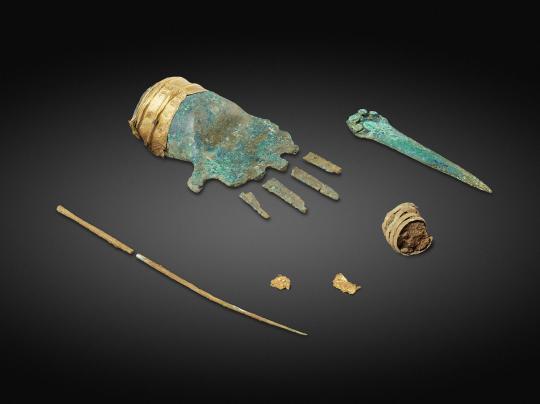
3,500 year old golden hand, found near Bern, Switzerland [OS][1900x1423]
Source: https://reddit.com/r/ArtefactPorn/comments/dfli74/3500_year_old_golden_hand_found_near_bern/
93 notes
·
View notes
Photo

Tobacco jar, Japan, 1701-1800 [1022x1536]
Source: https://reddit.com/r/ArtefactPorn/comments/eq42yx/tobacco_jar_japan_17011800_1022x1536/
645 notes
·
View notes
Photo

A Roman carriage was found in a grave near Vinkovci (Croatia) yesterday. It is believed to have originated in the 3rd century A.D. The carriage is well preserved, and is the first such discovery in that area. [1000x750]
Source: https://reddit.com/r/ArtefactPorn/comments/diur9l/a_roman_carriage_was_found_in_a_grave_near/
94 notes
·
View notes
Text









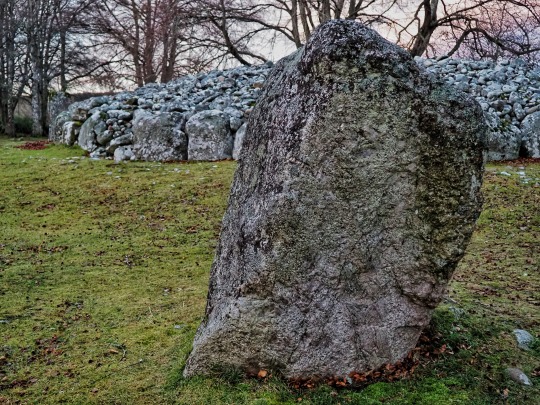
'Balnuaran of Clava' Chambered Cairn Complex Photoset 3, Inverness, Scotland 21.12.19.
148 notes
·
View notes
Photo
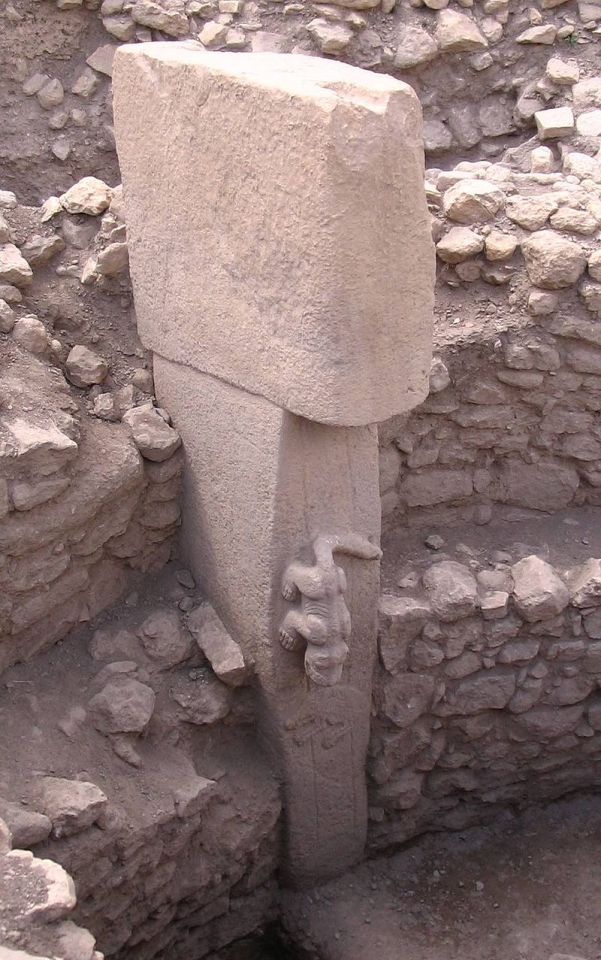
Monolith excavated at Göbekli Tepe featuring predatory animal catching prey (c. 9000 BCE) [977x1560]
Source: https://reddit.com/r/ArtefactPorn/comments/e58zlk/monolith_excavated_at_göbekli_tepe_featuring/
148 notes
·
View notes
Photo
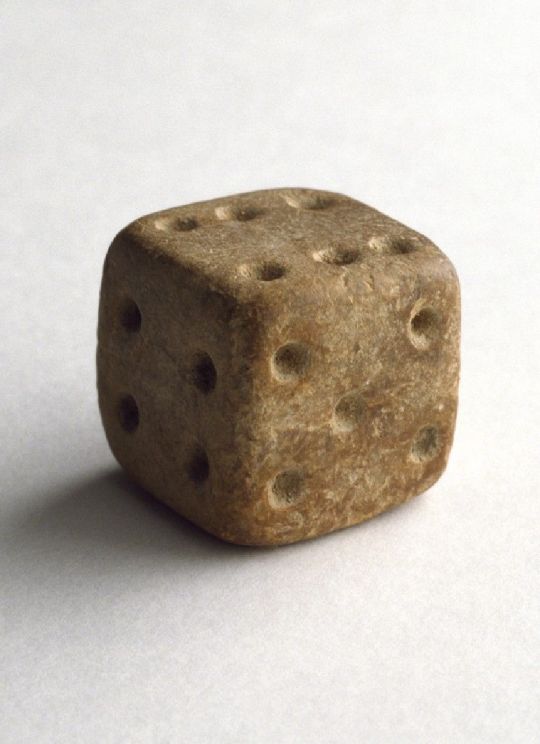
Terracotta dice from the Indus valley, India, 2500 - 1000 BC [800x1102]
Source: https://reddit.com/r/ArtefactPorn/comments/awv86e/terracotta_dice_from_the_indus_valley_india_2500/
594 notes
·
View notes














